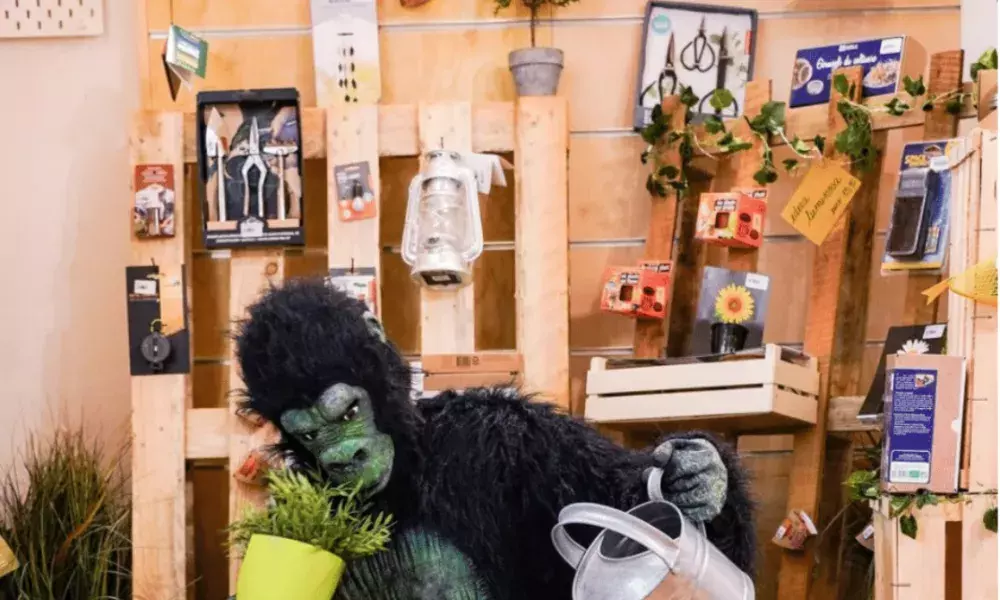
The second edition of Prato Urban Jungle (PUJ) journal describes and analyses the progress of the project in the last six months, from May 2021 to October 2021. During this period the progress of the project is in line with what was planned although the consortium has asked a year extension due to the impact of Covid-19 at the beginning of the project.
Executive Summary
The content of this second edition is based on a series of interviews that took place on October 2021 with members of the PUJ consortium, among others, the Municipality of Prato, Treedom, Legambiente Toscana and gGreenApes. From these exchanges, I would notably like to highlight in the first three sections the areas that are particularly interesting at this development stage of PUJ.
Section 2 - “Background and context” providing a general framework in which the project is embedded.
Section 3 - “Partnership” providing an overview of the responsibilities and activities carried out by project partners.
Section 4 - “Updates on pilot sites” addresses the progress of the work in the directly interested three, and the additional fourth, pilot sites.
Section 5 - “Digitalization in PUJ” highlights two digital platforms: gGreenApes and Prato Forest City. The former rewards the citizen who performs virtuous and sustainable behavior. While, the latter is the governance platform that permits the management of green areas and the creation of an urban jungle.
Section 6 - “Raising awareness” focuses on environmental communication and education, and the connection in all its expression, leveraging on already active relationships among citizens.
Section 7 - “Main implementation challenges” outlines the main implementation-related challenges faced by the project in the last six months.
Section 8 - “Key learning points and next steps” launches the activities upcoming in the following months of the project.
The subsequent journal will pay further attention to the advancements of the implementation process. Enjoy this second journey into the Prato Urban Jungle world!
Background and Context
In 2018, the Municipality of Prato adopted a new master plan that dictates the rules of use of the territory of the entire municipality on the types of intervention on an existing building (from renovation to expansion) or on the land use (e.g. agricultural or building). Among the thematics tackled by the master plan, the environmental one finds its expression in the urban forestry strategy where the analysis of urban green benefits by Stefano Mancuso and Pnat is supported by the Forestry Action Plan by Boeri Architects.
The analysis carried out on 29,151 public trees made it possible to estimate and evaluate their value in order to guide planning choices: buildings, road areas or waterproofed surfaces without trees are responsible for raising local temperatures. The so-called "green infrastructures" enhance energy saving, the increase in the value of buildings, the reduction of pollution, the improvement of air quality, the increase in biodiversity, the reduction of runoff phenomena and much more benefits.
The Urban Forestry Action Plan foresees six strategies as key guidelines :
- River and Gore Park,
- Green Infrastructure Mitigation,
- Capillary Green,
- Peri-urban Agricultural Gulfs and Large Parks,
- Urban Demineralization
- Agricultural Belt Park
The plan thereby aims to increase of the wooded areas of the city, in particular in areas with a high rate of urbanization, in order to restore spaces and corridors of life, through processes of urban re-naturalization. A large wood that unites existing and newly planned parks, agricultural areas and private green spaces in a single system. A forecast of planting of 190,000 trees, approximately one for each inhabitant. An effective environmental compensation tool that finds its implementation in the regulatory body of the master plan.
As part of this strategy, the Prato Urban Jungle (PUJ) project aims to renovate the districts of Prato in a sustainable and socially inclusive way by developing urban jungles, i.e. redesigned areas with a high density of greenery, immersed in the urban structure, which multiply the capacity natural plant to break down pollutants, restore the use of soil and space in the community and transform marginal and decaying areas into active green hubs within the city.
Partnership
|
Municipality of Prato
|
Project management and coordination; Political and administrative accompanying of pilot sites Interaction and support of the digital platforms developed by greenApes and Treedom |
|
PNAT
|
Development of the Air machine in the Macrolotto Zero site and design of the recreational park |
|
Boeri Architects
|
Design of the facades for the Estra pilot site design of the jungle at San Giusto Neighborhood |
|
CNR IBE
|
Development of the monitoring platform |
|
ESTRA
|
Support of the Estra pilot site and involvement of employees in virtuous behaviours |
|
Legambiente Toscana
|
Development of two toolkits and carrying out of workshops |
|
greenApes
|
Development of the app, stakeholder involvement and monitoring |
|
Treedom
|
Development of the platform, stakeholder engagement and communication |
Recent Activities
I remind readers that the solutions proposed by PUJ focus on three pilot sites are: Soccorso neighborhood, Consiag – ESTRA Headquarter; San Giusto neighborhood, EPP buildings in Via Turchia; and Macrolotto Zero neighborhood, covered market. At a later stage, a fourth pilot site, to be implemented with municipal funds, was added: commercial area, Via delle Pleiadi.
In the Soccorso neighborhood, Consiag – ESTRA Headquarter, partners, in particular ESTRA, Boeri Architects and the Municipality of Prato went through a long and difficult negotiation. Initially, according to the proposal by Boeri Architects, only a part of the building (a third) had to be modernized with nature-based solutions. However, Consiag has asked to extend the intervention to the entire building. Thus, the two main parties, Consiag and Boeri Architects reached a private agreement, which will entrust Boeri Architects to carry out the renovation of the whole building.
In the San Giusto neighborhood, EPP buildings in Via Turchia the nature-based solutions intervention related to PUJ will be preceded by the energy efficiency of the buildings. Even though this intervention will cause a slight delay in finalizing the project, it meets the resident’s needs. In spite of everything, it is planned that the whole intervention will be completed by the end of the next year. Also in this situation there have been some changes from the project application. For instance, the Junglathon-LAB days held last September were supposed to be only the initial phase of a co-design phase, which could have lasted for the entire duration of the intervention. Even though, they have been useful to gather a better insight of the area and to better understand the needs of the residents, it has been decided that they will not continue. Instead, condominium meeting or assemblies will be organized to mediate on the conflicts or inconveniences caused by the renovation and construction works.
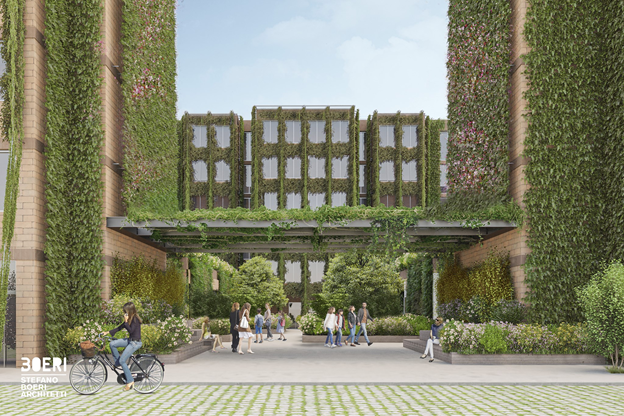
In the Macrolotto Zero neighborhood the renovation of the building that will host the covered market was already completed by the end of the last year. Before starting the work and the implementation of the nature-based solution and the “air factory” related to PUJ project, the Municipality of Prato decided to run a trial period. The covered market opened up, at the end of January beginning of February, to local farmers and vendors associates at the farmers’ association “Terre di Prato”. Initially, it has been registered a significant interest in the space and it was widely frequented by the citizens of Prato, but not only, during the two opening days and during the events in the weekends. However, after summer, when the opening days and the activities restarted taking place, it has been registered less interest and fewer people were keep going there. This could be led by a high price of the products (fresh, locals and bio), and an established non-tradition of markets in Prato. Therefore, local farmers and vendors requested to end the trial in advance because it was not profitable anymore, even though, temporarily, they were not paying any rental. Soon the PUJ interventions inside the covered market will start, and the municipality would probably have to think a different governance and business model for the covered market.

In the additional site, the commercial area, Via delle Pleiadi there is no pressure to end all the implementation and activities within PUJ, because it is co-financed by municipal resources. Although, given the experience with the trail in the covered market, it is important to understand prior the future management model and how to engage different stakeholders for activating the area. Currently, there are talks undergoing, also in this situation, with the association “Terre di Prato”, small local brewery and local schools. Additionally, the Municipality of Prato is also negotiating with Coop for the prospect of selling the products farmed in the greenhouse directly in their grocery store.
Digitalization in PUJ
greenApes is a customizable platform to measure and reward sustainable behaviours of citizens. The municipality can choose the behaviours they would like to reward, such as green mobility, waste sorting, energy savings, participation and volunteering, local consumption, and greenApes will allow to measure such environmentally friendly behaviours and deploy a scheme involving private stakeholders where prizes and rewards are not a cost for the public administration.
The greenApes application in Prato initially developed a preparatory phase to define the needs of user groups and define the stakeholders’ ecosystem in the city.
At the end of May 2021, the app was launched, receiving very positive feedback. In particular, the city actively contributed towards the creation of synergies on the cultural level, creating opportunities for users to win tickets for museums and theatre. On occasion of the European Week for Sustainable Mobility Week the Council for Mobility started planning initiatives to reward sustainable commuting between home and work places. Special on-app challenges were also created in connection with the Toolkit developed by Legambiente for schools: a special section on the app is now dedicated to teachers, to support the horizontal sharing of experiences, ideas, recommendations and questions related to the educational activities presented in the Toolkit, and with the ambition of facilitating, in the future, the involvement of the kids’ families.
In relation to the use that the different pilot cases can make of the app, this is still under definition. For example, within the ESTRA offices there is the will of the company to support environmentally virtuous activities by employees. On the other sites, this is still being defined. For example, the the purchase of local products from the Terre di Prato was promoted and rewarded on the app, but given the uncertainties about the future of the Market new strategies might be required.
At the moment there are no specific actions with key stakeholder groups of the pilots, such as the inhabitants of the social housing or the Chinese community living close to the market. The inputs coming from the co-design “Junglathon” sessions within these areas were accounted for the definition of the app experience and the incentives scheme, but there is no “customized” environment for such communities.
For dissemination the project was greatly supported by the local partners involved in the scheme and there are ideas to also involve CESVOT, the local network of volunteering associations. There is also a structured synergy with Prato Forest City platform to reward citizens that will contribute to the activities promoted on such platform (donations, volunteering, events participation).
Currently the app has 677 subscribers that carried out 14.000 actions around sustainable mobility, being the largest portion of actions also because these are automatically registered by the app. A number of 108 awards were distributed by 20-30 stakeholders from the territory. There have been 1644 good practices shared, such as recipes or actions, and 14.600 claps, similar to likes in social media.
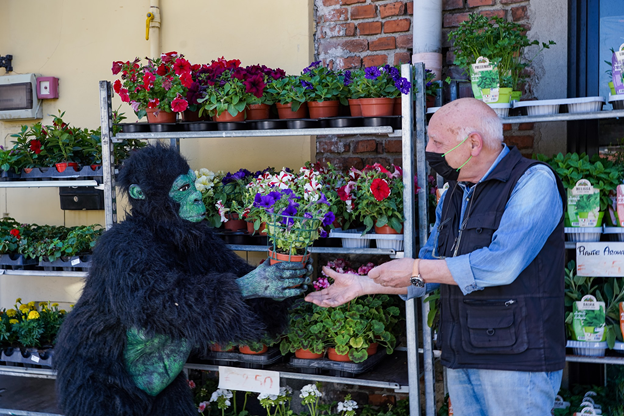
Prato forest city is a platform aiming at creating awareness, crowdfunding and monitoring of forestation projects within the city. The ambition of the City of Prato, according to the forestation plan, is to have 200.000 new trees planted.
The city can identify a number of areas on which citizens and companies can invest to purchase and plant trees.
The platform will be launched by the end of the year with three projects:
-
pediatric emergency department of the Prato hospital where the OBI company sponsored the planting of trees in the garden;
-
school garden of a school sponsored by a local company;
-
park along the river in Prato.
Last June a temporary park was created in the Campoldi museum and public library, which had a great success with many people staying in the park which was created through the national funding for forestation projects. Such experiments have the added value of allowing the municipality and local stakeholders to understand how they should proceed within the project.
An important aspect of this platform is the added value in terms of visibility that local companies may gain by sponsoring projects. In fact, companies from Prato are mainly involved in the textile industry, providing garments for larger brands who are often using environmental sustainability aspects as part of their ethical dimension in the marketing strategy. For this reason, the possibility of having a quality label when sponsoring local forestation projects would be beneficial.
Currently the platform is being developed and managed by Treedom but it has been planned in synergy with the city council as they will manage it directly by the end of the PUJ project. The financial dimension of the donations are economically handled by Fondazione AMI Prato Onlus, which allows to have an easier and faster accounting mechanisms than the City would have.
There is also a synergy with the greenApes app as any volunteering activity within this platform would also allow to get tokens.
The platform will soon be launched and will offer the possibility of activating a number of new projects in the city.
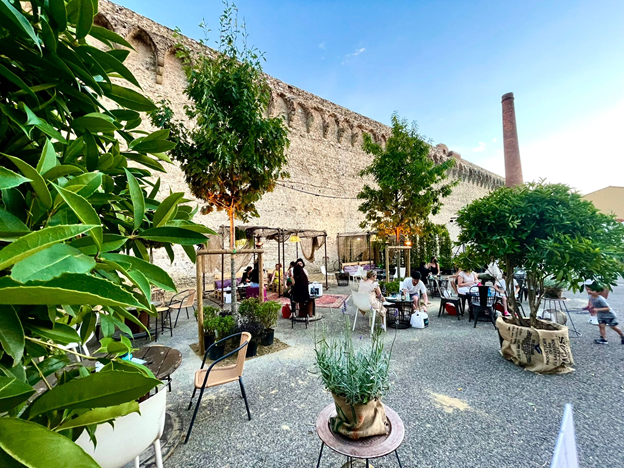
Raising Awareness
Legambiente developed two toolkits to support the communication and training of citizens and school children in order to facilitate their understating and interventions within Prato as a green city.
The toolkit “The city of plants” was developed to overcome some prejudice around plants and give citizens a guidebook that could connect in a logical manner the PUJ project in Prato with the local planning strategies in relation to green, beyond aesthetic purposes.
Citizens gave positive strong feedback to the activities, in fact already four events were carried out and six more are planned in spring. There was a fluctuating participation of approximately 20 people per session, depending on the specific interests of participants, who are often people already interested in the topic, such as greenhouse owners of the area, as well as students and elderly people. Interestingly, there was a strong involvement of women.
The toolkit “Green Generation” was developed for school as an educational tool for teachers, especially those in middle school, in order to make operational the learnings for students.
In relation to the activities in schools, a section within the greenApes app was created to support the educational community with a digital space. Up until now a number of meetings were carried out with the schools in order to include the activities within the extra-curricular plan.
Printed copies of the toolkit were already distributed to all the interested six schools, which were selected in order to have also open-air space for the practical activities.
Within the project it was not yet possible to engage members of the chinese heritage community of Prato, one of the largest in Europe.
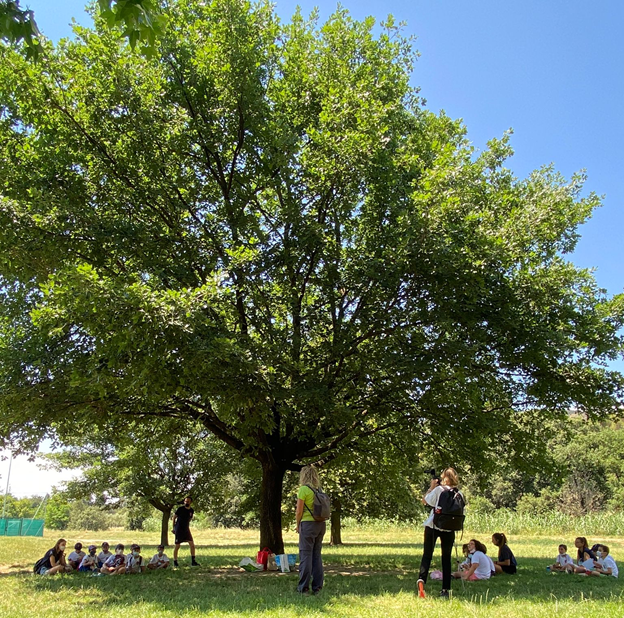
Mapping Prato Urban Jungle (PUJ) against the established UIA challenges
The City fo Prato has a very solid leadership of the project both at political level, with the city councillor for urban planning and environment as well as the one for economic affairs being highly committed and the Mayor being very well informed about the project activities, as well as at the administrative level, with the EU funds, urban planning and environment depts being involved. The project has been prolonged of one year due to the pandemic.
Currently the public procurement within the project appears to be in time with the expected plans.
The most relevant departments for the implementation of the project are highly committed, these being the EU funds, urban planning and environment departments. Currently the departments cooperate by regularly meeting between one another and cooperating with the city councillors of reference.
Despite their efforts to ensure citizens participation in the choices developed for the three pilot cases during the pandemic, this is currently a sensitive aspect. Key sensitive stakeholder groups, such as the inhabitants of the social housing district of Via Turchia and the Chinese community living in the neighborhood around the market, are currently not being involved in the key actions. The City is planning to adopt mediation support with the inhabitants of Via Turchia. No specific actions are currently planned with the Chinese Community.
The monitoring of activities is being well carried out, its evaluation is adequate, at least given the initial stage of the project.
Currently the project pilots are developing a plan for their long-term sustainability after the project ending, for example for the management of the urban forests in order not to be solely responsibility of the Public Administration.
The communication team hired for the project is highly integrated within the partnership and committed in narrating the project developments through different media. The weakness can be identified in relation to the communication in relation to the participatory actions, as mentioned above.
Due to the pandemic the international exchanges of the project partnership have been very limited, if not though digital means which don’t help to understand the local implementation contexts. For this reason, a specific roadmap should be developed as the travel restrictions will probably be carried out for a long time.
Conclusion
In this phase a great effort of the PUJ project has gone towards the engagement of stakeholders, also to compensate for the distancing there was due to the pandemic.
The digital application greenApes shows us how engaging citizens through fun activities where competitions and challenges are followed by awards is a successful strategy.
The toolkits developed by Legambiente both provide a theoretical framework which is supported by practical activities which allow people to get their hands dirty and learn by doing.
All activities from the PUJ project try to reach out to different segments of the population, such as the Prato Forest City which reaches out also to companies, the pilot areas reach out to employees, inhabitants and neighbours.
It is impossible to reach everyone all at once, therefore it is important to increasingly identify citizens segments which might have been not reached yet by developing a specific strategy, as is being done by the City of Prato to reach out to the inhabitants of the social housing estate of Via Turchia.
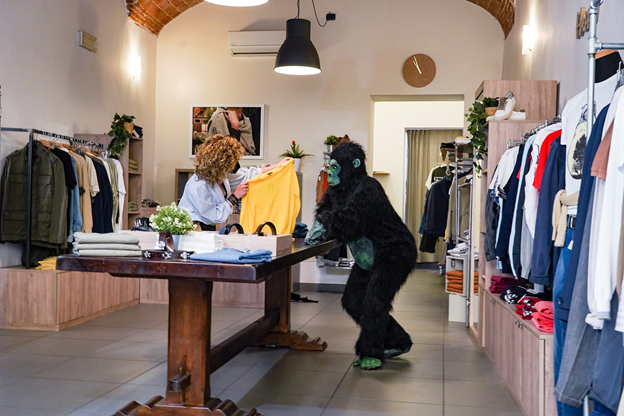
Project website on UIA site: https://uia-initiative.eu/en/uia-cities/prato
Project website in italian: https://www.pratourbanjungle.it/home1943.html
Project social media: https://www.facebook.com/PratoUrbanJungle
Author of the Journal #2: Daniela Patti, UIA Expert
Images from the Prato Urban Jungle project
About this resource
The Urban Innovative Actions (UIA) is a European Union initiative that provided funding to urban areas across Europe to test new and unproven solutions to urban challenges. The initiative had a total ERDF budget of €372 million for 2014-2020.
Similar content




